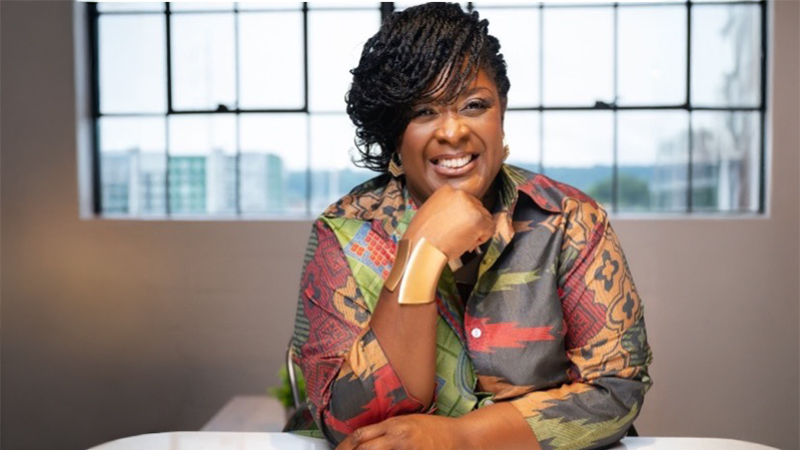The Qualities of a Great Principal


Behind every great teacher is a great principal. In fact, principals are the most important factor in attracting and retaining high-quality teachers. A teacher impacts learning in one classroom, while principals influence high-quality instruction schoolwide. Some principals see consistent gains in their schools while others see pockets of excellence. What accounts for these differences?
In the past 20 years, New Leaders has trained 8,000 equity-focused leaders who impact over 2 million students in our K-12 system every year. We’ve seen first-hand what it takes to be a great principal. Our Transformational Leadership Framework™ identifies key leadership actions that drive sustainable school improvement, regardless of school size, location, or student demographics. And our alumni bring these practices to life in their schools each day.
In honor of National Principals Month, here’s what we know—and what research confirms—to be the qualities of a transformational school leader:
A relentless focus on teaching and learning
It all starts with a vision of instructional excellence and academic success for all students. Many studies, including over a decade of Wallace Foundation-supported research, tell us that great principals have a laser-like focus on the instructional quality in the schools that they lead. Effective school leaders have a data-informed understanding of what's driving success for their students and encourage collaboration to move towards their vision. They know what’s going on in classrooms and can differentiate teacher support accordingly.
Effective principals zero in on equity. They promote a mindset in their staff that all children are capable of learning at high levels. They also ensure the curriculum is both academically rigorous and culturally responsive. And they remain resilient in the face of adversity, removing barriers to student success.
A high-expectations school culture
When leaders have high expectations of staff and students, they instill the confidence and agency needed to strive for higher levels of performance. Working together, they create a learning environment in which everyone feels safe, valued, cared for, and seen.
The first step to building a high-expectations culture and shared accountability? It all comes back to that vision of student achievement and learning for all students. From there, great principals define the values, expectations, and support that staff members need to realize their belief that all students can learn. This leads to our next point.
{{purple-form}}
Exceptional teacher support and shared leadership
Teachers play an important role in carrying out the vision. Great principals share leadership with their teams. In turn, teachers become more engaged, fulfilled, productive, and effective. New Leaders alum Felipe Jackson, reflecting on the impact of leaning on his team during the pandemic, explains: “What I realized is that the more I gave my team opportunities to lead and be a part of the process, the more I knew we were going to be okay.”
Great principals build and nurture trusting relationships when they have high expectations of teachers and communicate with them on a regular basis. To build more trust and motivate teachers, great school leaders prioritize coaching and provide constructive feedback in a timely manner. When feedback is consistent, frequent, specific, and actionable, the impact on teacher growth—and student learning—is much greater.
Great principals share leadership with their teams. In turn, teachers become more engaged, fulfilled, productive, and effective.
Self-reflection, passion and continuous growth
This is where the heart of the transformational leader lies. The secret sauce. The X-factor. Whatever you call it, it is cultivated when leaders remain focused on their vision and also dedicate time to reflect on their own practice and then move forward differently.
Personal leadership is further demonstrated when principals lead by example and gain the respect of their team. You can improve your personal leadership, no matter your role, by taking small actions to model the behaviors you’d like to see, even if it’s as simple as asking a student how they are doing on a given day. Great leaders gain respect by keeping students at the core of decision-making, remaining consistent, and communicating the reasoning behind their decisions.
Leadership is also synonymous with learning. The University of San Diego puts it well when they describe that the best leaders are “humble in their knowledge, yet confident in their abilities.” A successful school leader is always pushing past personal boundaries to continue to learn and grow, which couldn’t be a better behavior to model for staff and students.
The structures for success
Great principals put the appropriate systems into place to achieve their vision. This includes systems that support teacher growth, distribute resources equitably, and create decision making processes that honor all voices. Great principals also keep their eye on school performance, working to convert pockets of excellence into schoolwide excellence. Systemizing collaboration, for instance, ensures that teachers are sharing best instructional practices. This positively impacts instructional quality and student achievement across the school.
The qualities of a great principal share a common thread: they don’t work without a vision.
Commitment to the vision
After Hurricane Katrina, students were displaced across the country and many had fallen behind. Some standout principals, like New Leaders alum Karen Bryan-Chambers, led post-Katrina school communities to rapid success despite the circumstances. When asked what could be attributed to her student gains, Bryan-Chambers didn’t hesitate. “Our vision drove our work...we believed that it was the responsibility of every adult in our school to make sure our students achieved. Together, we did whatever it took to make that vision a reality for our children.”
The qualities of a great principal share a common thread: they don’t work without a vision. Without a vision, a leader doesn’t have the people. Leadership is hard work. It’s a lifelong journey. But when principals hold tightly to their vision and inspire others to get behind it, the rest falls into place with time and practice.




.svg)
.svg)
.svg)
.svg)



.svg)
.svg)







